- Home
- Rick Mofina
The Burning Edge Page 3
The Burning Edge Read online
Page 3
“This is crazy.” Dixon concentrated on the police chatter flowing into his ear. “You won’t believe who that is.”
Gannon squinted down the street. “Who?”
Dixon absorbed more from the scanner, then said, “It’s Gustav.”
“What?”
Dixon held up a finger, listening to his scanner.
“All this time—” Dixon smiled “—he’s been at the deli around the block. He heard the commotion, then started asking cops when he can get back into his apartment. Wait. He says Sylvester has no guns, hates guns, is going through tough times, is emotionally unstable and makes stuff up.”
“He makes stuff up?”
Gannon saw a uniformed cop enter Nada’s building with a large brown bag. “Now what?”
Ten minutes passed and nothing.
Gannon’s phone buzzed and he received a photo of himself at the cordon taken from the cordon at the opposite end of the street.
The message with it said Hey.
Gannon studied the press pack at the west cordon. A woman gave him a small wave. Katrina Kisko, a reporter with the New York Signal, the new online newspaper.
Seeing her gave him pause.
They’d met at a double homicide in the Bronx and started dating. It was good—better than good. He’d fallen hard for her, thought they had something strong. For the first time in his life, he was no longer alone. Until Katrina broke it off, telling him that being in the same business made things “too complicated” for her.
Too complicated?
He was stunned. He didn’t understand. It was like a kick in the teeth.
That was a few months ago and Gannon hadn’t seen her until now.
He returned her wave.
Then NYPD radios crackled. The cordon tape was lifted; Dixon and other news photographers rushed toward the building, recording Nada being escorted shirtless and cuffed into a waiting car.
It was over.
Twenty minutes later, the NYPD press officer told reporters that there was never a hostage or guns involved. Nada was going to Bellevue for a psych evaluation.
Reporters fired a barrage of questions. Gannon had to repeat his three times before the officer got to it.
“What about the Napoleon gun?” Gannon asked.
“A fabrication.”
More questions and Katrina Kisko weighed in.
“How did you get Nada to surrender?” she asked.
“He asked for food and we gave it to him.”
“What kind of food?” Katrina asked.
“A cheeseburger, fries and a milk shake.”
“What flavor was the shake?” Katrina asked.
“Cripes.” The press officer repeated her question into his radio.
The answer crackled back. “Strawberry.”
Katrina smiled and resumed typing on her BlackBerry.
At that point Gannon’s phone rang.
“This is Lisker.”
“It’s over. There’s no gun, no hostage, no story.”
“Yeah, we’ve got something else. One of our stringers just picked this up on his police scanners—four murders in an armored car hit at an I-87 truck stop.”
“Where?”
“Ramapo. We’re breaking it. We’ll work the phones here but I want you and Dixon to get up there now. You’re the lead. We have to own this story, Gannon.”
“On my way.”
Gannon turned to face Katrina.
“On your way where?” she asked.
“Really, Katrina? You’ve got to be kidding.” Gannon saw Dixon signaling to hustle to his parked car.
“I thought we were friends, we could help each other,” she said.
“Friends? Give me a break.”
“Maybe I handled things wrong. I’m sorry if I hurt you, Jack.”
“I’ve got to go.”
“You’re seriously not going to tell me?”
Gannon left her standing there and rushed to Dixon’s Dodge Journey. Ten minutes later, he watched Lower Manhattan and the East River rush by as Dixon accelerated on FDR Drive, weaving through northbound traffic. As they passed the United Nations and the span of the Queensboro Bridge, Dixon estimated they’d get to Ramapo in an hour.
“By the way, what was that with your extremely hot girlfriend?”
“Ex.”
“All right, your extremely hot ex-girlfriend.”
“Nothing, Angelo.”
“Right.” Dixon laughed.
Gannon’s thoughts of Katrina were eclipsed by the knot tightening in his stomach.
Four homicides awaited him.
5
Ramapo, Metropolitan New York City
Whomp-whomp-whomp…
A few miles south of Ramapo police roadblocks halted traffic in the south- and northbound lanes of the thruway while a New York State Police helicopter cut across the sky above Gannon and Dixon.
After showing press ID at the roadblock, they were waved through.
Maneuvering through the traffic, Dixon got them down to the exit for the service center, then to the first entrance, but no farther. It was blocked by patrol units with Rockland County.
An officer stepped up to Dixon’s SUV.
“You’re going to have to turn around, sir. You can’t go any farther.”
“We’re press.”
“Who are you with?”
“WPA.” Dixon and Gannon held up plastic IDs from their neck chains.
“All right. Park with the others and stay outside the tape.” The officer pointed to the distant landscaped island with the service center’s sign.
Gannon took stock of the knot of news trucks and cars emblazoned with station call letters. But no media people were around. Dixon grabbed his gear and they walked quickly, keeping outside the yellow tape that stretched around the perimeter of the huge lot. Along the way, they came to clusters of onlookers at the tape and stopped to talk to them.
“All I know is my sister’s a waitress in the restaurant and nobody can tell me anything,” said Reeve Torbey, a man in his twenties wearing a faded Guns & Roses T-shirt. “I texted her, tried calling her cell, the restaurant. I can’t get through.”
Gannon quoted him, got his cell number and left his card, urging him to call and promising to share information.
Agnes Slade, a woman with silver hair pulled up in a bun, shielded her eyes as she stared at the center, a phone clutched in one hand.
“My son’s in town and just called me. He said police are searching everywhere,” she told Gannon. “Things like this just don’t happen here.”
As Gannon and Dixon moved on, the sound of approaching sirens underscored the drama. Gannon heard the deep rumble of a Cessna.
Could be TV news, or police searching for suspects, he figured.
“Here we go,” Dixon said.
Amid the gaps in the lake of rigs, cars and emergency vehicles parked in the lot, Dixon glimpsed the armored truck and crime scene techs working around it. He steadied himself and focused his long lens.
Gannon moved on, exploring farther. Over his years as a crime reporter with the Buffalo Sentinel, he knew what to glean from a scene to give his work depth and accuracy. He’d studied the same textbooks detectives studied to pass their exams. And he’d researched and reported on enough homicides and murder trials to know the anatomy of an investigation.
It had earned him the respect of the seasoned detectives he knew.
Forty yards from Dixon, Gannon stopped and signaled him to the spot.
“Have a look through there.”
They still saw the armored car, but from this different perspective they could now see the sheet on the pavement covering the victim near it. Dixon took more pictures.
“Look through the entrance doors,” Gannon said.
A cloud passed, dimming the sun’s reflection on the glass doors, allowing Dixon to see inside and make out two more sheets covering victims on the lobby floor. In one case, a boot extended from under the sheet. Keeping beyond the tape, Dixon took more pictures, framing them with the outside victim and armored truck in the foreground and the two victims inside in the background with investigators bent over them.
It was a powerful news photo.
A uniformed cop yelled at them to keep moving and pointed toward the flagpoles farther along. As they walked away, Gannon glanced around the scene, feeling the clock ticking down. He had to find a way into the heart of what had happened here and why.
His BlackBerry vibrated with a text. The WPA’s news desk advised him that their stringer was having car trouble and would be late. Gannon was not concerned the WPA had dispatched more staff from headquarters.
Gannon and Dixon could handle the early work.
About a dozen news types were gathered at the flagpoles in what was an impromptu press area. Four TV news cameras topped tripods and a couple of photographers chatted with people holding notebooks, recorders and microphones with station flags.
Gannon checked his BlackBerry again. The WPA had already moved another short news hit out of headquarters. The latest read:Four people are dead after the brazen robbery of an American Centurion armored truck at the Freedom Freeway Service Center in Ramapo, at New York City’s northern edge, according to local authorities. The suspects remain at large.
“Carrie Carter, WRCX Radio 5 News.” A woman in her mid-twenties smiled at Gannon. “Who are you with?”
“WPA.” Given the size of the group, Gannon figured not all the press from the city had arrived yet. “So what’s going on here?”
“You tell us. The WPA beat everybody with that first wire story.”
“What have they told you here so far? Looks like you’re set up for a briefing. They talk to you yet?” Gannon asked.
“Not yet. Ramapo P.D.
promised us a press briefing in ten minutes,” Carrie said, “but that was twenty-five minutes ago.”
Gannon knew armored car robberies fell to FBI jurisdiction and figured the local cops were likely sorting out just who was going to say what. Glancing to the parking area, he saw satellite trucks from the networks and other news cars arriving.
“What’s on the other side of the complex?”
“Nothing, just administrative offices,” Carrie said. “There’s nothing going on. The entire property is taped off. Police are everywhere. I’ve never seen so many.”
Gannon had to make a choice: stay and be spoon-fed information, or go digging. Figuring he didn’t have much time, he jotted his cell number on his business card and passed it to Carrie Carter.
“Will you do me a favor, Carrie? Call me the moment it looks like they’ll start?”
“Sure.” She glanced at his card. “Jack Gannon? I’ve heard of you. You broke that big story about the scientist who stole the old CIA experiment.”
Gannon nodded, then advised Dixon, who was gossiping with a photographer, that he was going off alone to check a few things out. They’d alert each other if something came up.
He walked quickly along the tape, scrutinizing every window of the center, every movement, every RV, car, truck, ambulance, patrol car and emergency vehicle. He knew that inside the center, police were taking statements from witnesses, getting their accounts while everything was fresh. Crime scene techs would be photographing, tagging and bagging. The county medical examiner would be called in.
As sirens wailed and the activity continued, Gannon searched for something, anything that might help. Maybe a witness would be released and walk to their car or truck? But he saw nothing but police in the lot.
Hold on. Who’s that?
Gannon focused on a New York state trooper with a clipboard walking to a patrol car in an isolated area near the tape. It had been a while, but it sure looked like—
“Brad!” Gannon called, careful no one else was close by.
The trooper turned, recognition blossoming on his face.
“Well, I’ll be a son of a gun. How the heck are you, Jack?”
He invited Gannon to his car, but Gannon indicated the tape.
“It’s okay.”
Gannon ducked under and no one saw him hurry to the patrol car.
Brad West had been posted to Troop A at the time Gannon was with the Buffalo Sentinel. West did a lot of volunteer work, but after a tough year, his charity for kids with cancer was low on money and on the brink of closing. West approached the paper, Gannon produced a heart-wrenching feature and the donations poured in.
“You got a friend for life here, Jack,” West told him.
Now, sitting out of sight in West’s patrol car, the two men caught up quickly as the trooper’s police radio crackled with dispatches. West said that last year, he transferred to Troop F after he got married to a woman he met at a police function in Syracuse.
“I’ll tell you, it’s a very small world,” West said. “I got called out to help on this and so did my wife. Anita’s with Ramapo P.D. She’s inside with the victims.”
“Really? Can I ask your help on this?”
“Name it.”
“You know I protect sources, Brad.”
“We’re good there.”
“What happened?” Gannon nodded to the center.
“It’s pretty bad in there. We’ve got four suspects who carried out the hit. Two of them killed two guards making an ATM delivery inside. Two of them killed the driver waiting in the truck. They got all the cash, could be several million.”
“What about the fourth victim?”
“The suspects ordered all the people to get on the floor. Turns out one is an off-duty cop and tries to go for his weapon. They see him and shoot him dead.”
“Jesus. Who’s he with?”
“He’s an FBI agent.”
“FBI?”
The story just got larger.
“What about witnesses? Got any?”
“I don’t know much about that.”
“What about the suspects?”
“I don’t think we have much. Faces were covered, they fled on motorcycles. We’re searching. FBI’s got this one, and with one of their own among the dead… Well, I think this one’s personal for the feds.”
“Who’s the case agent?”
“Somebody named Morrow.”
“Is he on-site?”
“He’s inside.”
“Any idea where? I might try to grab him.”
West nodded to the administrative section of the complex.
Gannon thanked West and, before leaving, exchanged cards with him. He returned to walking outside the tape until he came to the far side of the center and the administrative arm, which was circular, with floor-to-ceiling windows.
Gannon’s pulse quickened.
There were people and movement inside. Gannon inventoried his immediate area. A few patrol cars among the dozen or so parked vehicles. No cops and no other press.
He estimated that he was one hundred feet or more away. It took time for his eyes to adjust to the light and shadows before he could distinguish a desk and a man standing near it. The man had on a soft blue shirt and tie, sleeves rolled. There was movement. Other people were in the office with him. Gannon saw a cop’s uniform. Okay, a female officer.
Could this be it? The FBI talking to a witness?
Gannon ached to slip under the tape and approach the office.
He didn’t. He pulled out his phone and called Dixon.
“Angelo, say nothing. Don’t react. But take a second to excuse yourself, then head counterclockwise along the tape until you find me on the other side.”
“What’s up?”
“I think we’ve got something here.”
“Okay, give me a minute.”
Hanging up, Gannon nearly dropped his phone.
In the movement he saw a figure, looked like a woman, seated at the desk. Gannon could not see enough detail to determine her identity, but her actions chilled him. She set her head flat on the desk, raised her right hand and extended her forefinger to it as if it were a gun.
Christ, she’s acting out one of the murders.
6
Ramapo, Metropolitan New York City
Lisa Anne Palmer was the name of Morrow’s eyewitness.
Age: Thirty-one, widowed, with a ten-year-old son, Ethan, and eight-year-old daughter, Taylor. Gripping his folding clipboard, Morrow studied Lisa’s personal information, her preliminary statement and her driver’s-license picture. Five foot four, one hundred fifteen pounds. Pretty. Dishwater blonde. Blue eyes.
What exactly did you see?
Morrow’s collection of information for the investigation was growing. Upon arriving at the center, he’d interviewed the first responding officers to ensure the scene had been protected and to get an assessment. Then he’d slipped on elasticized shoe covers, tugged on latex gloves and examined the body of each victim before members of the FBI’s Evidence Response Team put on their coveralls and began processing the scene.
Other agents, supported by local investigators, were conducting separate interviews of travelers, locals, employees—everyone who was here when the crime happened. Outside, they took note of every plate and vehicle in the lot and they were checking security cameras. An enormous amount of work lay ahead. But as things stood, Lisa Palmer was the most valuable part of Morrow’s investigation.
Now, as he stepped into the center’s office and looked at her for the first time, sitting there in the manager’s leather chair, he asked himself if he could help this widowed supermarket cashier from Queens to lead him to the killers responsible for this bloodbath.
“Lisa…” Morrow shot a glance to the other agents in the room, along with Rowan, the uniform from Ramapo P.D. “I’m Special Agent Frank Morrow, FBI. I’m the case agent. I’ve read your information and—”
“Did you find them?”
“Not yet.”
“You have to find them!”
“We’re doing all we can. Odds are they’ve left the area. We don’t think they’d have any interest in having any contact with the victims again.”
“You don’t know that! I saw what those monsters did!” Anguish webbed across her face. “Are my kids okay? They took our cell phones! What if they get my home address and go after my kids?”

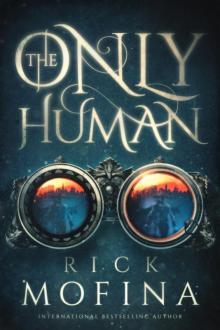 The Only Human
The Only Human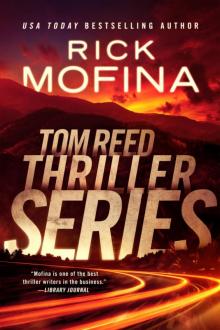 Tom Reed Thriller Series
Tom Reed Thriller Series![[Tom Reed and Walt Sydowski 04.0] No Way Back Read online](http://i1.bookreadfree.com/05/tom_reed_and_walt_sydowski_04_0_no_way_back_preview.jpg) [Tom Reed and Walt Sydowski 04.0] No Way Back
[Tom Reed and Walt Sydowski 04.0] No Way Back Missing Daughter
Missing Daughter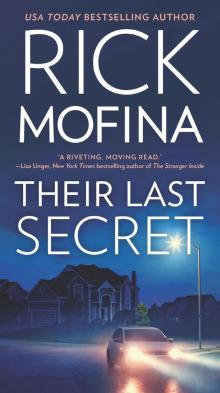 Their Last Secret
Their Last Secret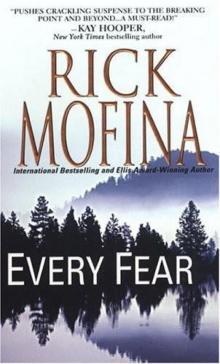 Jason Wade - 02 - Every Fear
Jason Wade - 02 - Every Fear In Desperation
In Desperation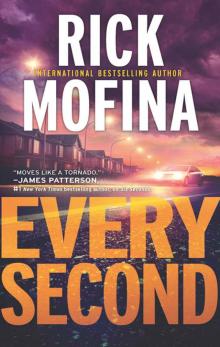 Every Second
Every Second Full Tilt
Full Tilt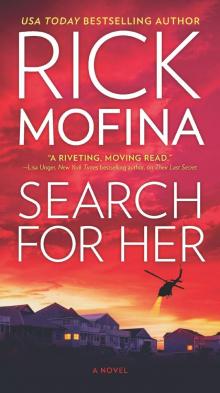 Search for Her
Search for Her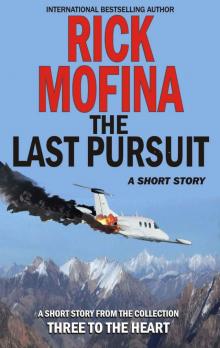 The Last Pursuit
The Last Pursuit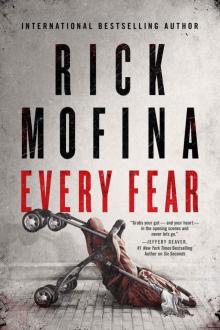 Every Fear
Every Fear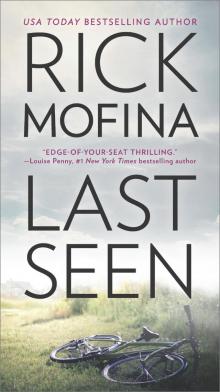 Last Seen
Last Seen The Panic Zone
The Panic Zone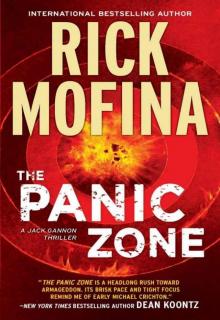 The Panic Zone jg-2
The Panic Zone jg-2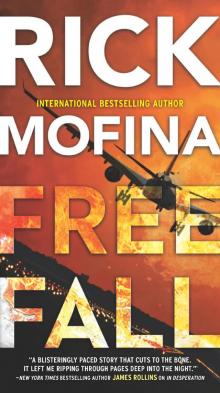 Free Fall
Free Fall Blood of Others
Blood of Others![[Jason Wade 02.0] Every Fear Read online](http://i1.bookreadfree.com/i1/03/31/jason_wade_02_0_every_fear_preview.jpg) [Jason Wade 02.0] Every Fear
[Jason Wade 02.0] Every Fear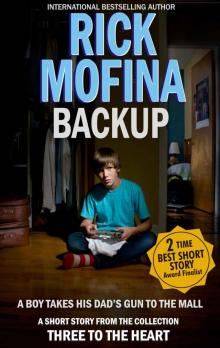 Backup
Backup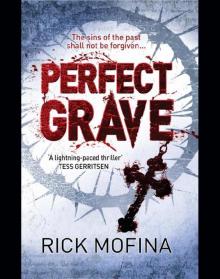 Perfect Grave
Perfect Grave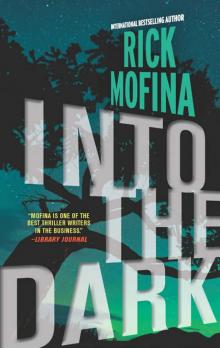 Into the Dark
Into the Dark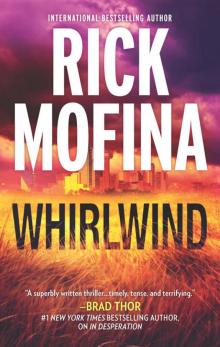 Whirlwind
Whirlwind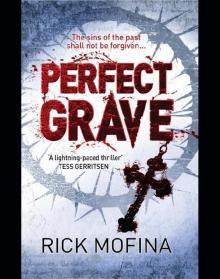 Perfect Grave jw-3
Perfect Grave jw-3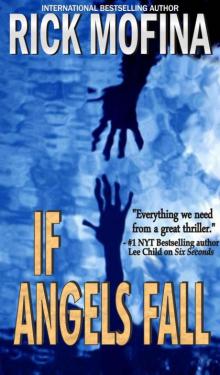 If Angels Fall (tom reed and walt sydowski)
If Angels Fall (tom reed and walt sydowski) Six Seconds
Six Seconds If Angels Fall
If Angels Fall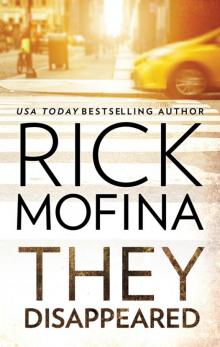 They Disappeared
They Disappeared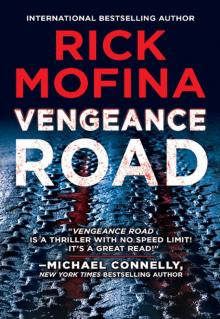 Vengeance Road
Vengeance Road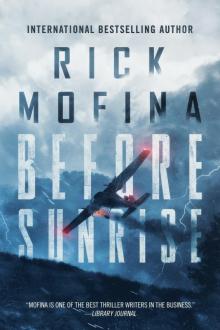 Before Sunrise
Before Sunrise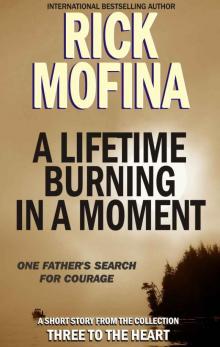 A Lifetime Burning in a Moment
A Lifetime Burning in a Moment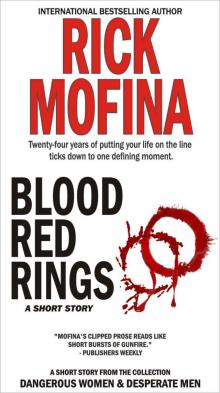 Blood Red Rings (Dangerous Women & Desperate Men)
Blood Red Rings (Dangerous Women & Desperate Men) As Long As We Both Shall Live (Dangerous Women & Desperate Men)
As Long As We Both Shall Live (Dangerous Women & Desperate Men)![[Tom Reed and Walt Sydowski 01.0] If Angels Fall Read online](http://i1.bookreadfree.com/i2/04/12/tom_reed_and_walt_sydowski_01_0_if_angels_fall_preview.jpg) [Tom Reed and Walt Sydowski 01.0] If Angels Fall
[Tom Reed and Walt Sydowski 01.0] If Angels Fall Cold Fear
Cold Fear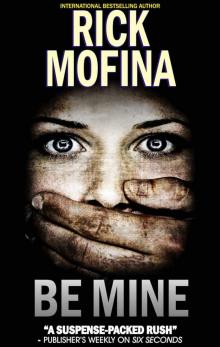 Be Mine
Be Mine Three Bullets To Queensland
Three Bullets To Queensland